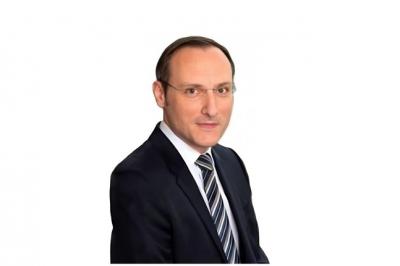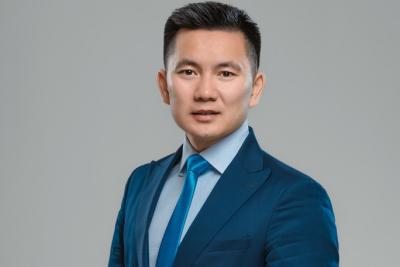Optimising & Sustaining Portfolios in a World of Dislocation and Uncertainty
A Hubbis Thought-leadership Discussion Supported by GMO, Exclusive Partner for the Event
In a recent Thought Leadership event in Bangkok, two global fund management house experts from GMO offer some fascinating views on future-focusing investor portfolios. The main portion of the event centred on the construction of a robust unconstrained portfolio for private wealth investors in light of the current and anticipated challenging global financial, fiscal, markets and geopolitical conditions. And the second portion of the event focused attention on the continuing drive to align both investment returns and the increasing global emphasis on greater sustainability.
These are some of the key topics addressed by the two speakers:
- Growth vs Value and GMO’s approach today
- What type of investment exposures can mitigate inflationary pressures?
- US Markets or Global Exposures?
- The Outlook for Bonds and Alternatives
- ESG and Sustainability (including the impact on returns, the effect of Net Zero/Decarbonisation, challenges around ESG data, and ESG engagement with companies in APAC
The Speakers from GMO:
Tommy Garvey
Tommy is a member of GMO’s Asset Allocation team. Prior to joining GMO in 2012, he worked at Close Brothers Asset Management, London, as the Chief Investment Officer of the multi-manager division. He was also the co-founder and Head of Institutional Business and principal at Aon Asset Management in London. He is a Fellow of the Institute of Actuaries.
Hardik Shah
Hardik Shah is based in Singapore and leads the ESG practice at GMO. He is responsible for building GMO’s ESG capability across investment product areas and asset classes. He was notably a member of the CFA Institute’s ESG Working Group for FY20, which developed a proposal for the ESG Disclosure Standards for Investment Products. He was subsequently selected to join their ESG Verification Subcommittee as well. Prior to joining GMO in 2017, he led a global team of ESG analysts at Sustainalytics, and before that worked as an ESG Ratings associate at MSCI, as well as a senior climate change consultant with EY.
A Short Note on GMO:
For more than 40 years, Boston-based global asset management group GMO has partnered with a broad range of sophisticated institutions, financial intermediaries, and families to provide the investment expertise they need to meet their goals and fulfil their missions. The firm is headquartered in Boston and has offices around the world, including Singapore and Sydney in APAC.
Curating value-centric investment approaches and portfolios for its clients is GMO’s sole focus. Across asset classes and around the world, the firm’s investment teams identify and seek to exploit long-term value opportunities and develop solutions that both anticipate and respond to client needs. Clients also receive access to all of the firm’s industry-leading, insightful investment research and commentary.
The GMO approach comprises a collection of investment teams with focused specialties. All are grounded in a long-term, valuation-based investment philosophy – an approach they believe provides the best risk-adjusted returns.
GMO also firmly believes in the value of ESG-focused investing as a means to align value and returns with the environment, sustainability and good governance.
The firm believes ESG factors can have a meaningful impact on the long-term success of companies and countries, hence the GMO investment teams incorporate them where they believe that doing so will improve investment results.
box
A Brief Introduction to the Event from GMO Leaders
Mehak Dua runs client relations and business development for GMO’s Global Client Relations team located in the Singapore office. Prior to joining GMO in 2015, she was a Vice President at PIMCO in New York, where she was responsible for coverage of corporate clients. Before that, she worked in investment banking with Goldman Sachs in New York and London and also at Additionally, she has served as a consultant to the World Bank.
“We want to share our current view of the world amidst widespread anxiety over inflation, interest rates and a host of other headwinds, and Tommy Garvey, a key member of our global asset allocation team, will present on that,” she told the assembled guests from the wealth management in Bangkok.
She also explained that GMO works with many clients from the wealth industry, such as private banks and independent asset managers and family offices, all of them catering to HNW and UHNW investors.
“The second topic of the day is ESG, where we have seen growing interest in recent years in Asia,” she said. “The approach amongst investors in the region was initially a returns-first mandate, but the dialogue has evolved significantly, and there is more interest in integration of ESG and sustainability. There is of course a continued emphasis on returns but aligned with sustainability in all contexts wherever possible. Hardik Shah is our ESG practice lead in the region and globally for GMO, and he is actually based in Singapore.”
And Zane Bernstein, the Sydney-based Head of Client Relations for Asia-Pacific, then offered a few words.
“GMO is more than 40 years old,” he reported. “We have roughly USD60 billion in assets and we are a private partnership, which is actually one of our key strengths. We run a multitude of strategies spanning long equities, global emerging through to absolute return, and hedge fund style products. We are value managers, which has been challenging for the past decade plus, during which growth dominated. But our partnership structure and fundamental beliefs help us stick to our convictions. And as we survey the world ahead, we are firm believers that value will repay investors over the coming years, and that there are significant opportunities to align value and sustainability in strong investment portfolios.”
Tommy Garvey on GMO’s Approach to Unconstrained [Benchmark-Free] Asset Allocation
Tommy Garvey then spoke, and armed with an excellent pdf presentation, offered the invitees many fascinating and valuable insights into the GMO approach to building a benchmark-free, unconstrained portfolio to help investors weather the many fiscal, financial, market and geopolitical challenges of today and that lie ahead.
We have summarised his very extensive comments in brief below.
Markets have fallen sharply in 2022, but they are still not cheap
Tommy reported that despite the market corrections year to date, valuations in major markets are still far from cheap. “US multiples were very, very high, but they remain above average levels,” he reported. “Earnings have been at record levels of profitability, partly because of record low interest rates, because of a higher share of profits to capital over labour, and due to lower taxes. But all of those elements are in danger of reversing. As a result, we're worried that multiples remain too high and are also based on record high earnings that we think are in jeopardy as well.
Inflation has spread in the form of contagion and looks set in for longer than expected
Tommy observed that inflation was initially led by energy and food, with a supply shock as the narrative and many considering that could be fixed quite quickly. “But now,” he warned, “it has migrated to services inflation, which tends to be an awful lot stickier. That is driven by wage rises, which then further drive prices up. Hence the US Federal Reserve said very recently that inflation might take longer to control, and that likely means more aggressive action ahead, which shouldn't really be a huge surprise.”
GMO looks at the future in seven-year segments and benchmarks value against normalisation
Tommy reported that GMO is well known for its recurrent seven-year forecasts.
“As a firm, we focus on value and the normalisation of valuations as a fantastic long-term investment perspective and tool, although we recognise this approach does not often help as an indicator of timing,” he explained. “We have really not seen ‘normal’ since before the Global Financial Crisis. We have not seen real positive real interest rates for a very long time.”
In short, he maintained that the GMO data shows the US is by far the most expensive market, developed markets outside the US are somewhat less expensive, and emerging markets less expensive than all those.
Value has been overlooked for the best part of 15 plus years, as investors rushed headlong to growth
“Value equities have for a long time been pretty much overlooked, as people chased growth stories,” he stated.
He explained that growth had outperformed value by close to 200% over the last roughly 15 years, but he thinks that a lot of that will unwind. This year to the end of June, the S&P 500 was down 20%, but NASDAQ was down nearer 30% as a lot of those growth narratives fell away, he reported.
He said that one of his team’s highest conviction investment ideas at the moment is accordingly long value equity and short growth equity. “That approach produced about 15% in returns last year and another 11% this year,” he told guests. “And we think that has a long way to go.”
Tommy said an advantage of being long value, cheap equities and short expensive growth equities is that there is no need to take a view on what the market will do.
“This approach should outperform if markets go up or down. If, for example, the US Fed steps back from interest rate rises, markets will probably go up. If they crack completely, value should still outperform. Accordingly, this is a very nice trade.”
He added that the big picture view is making sure that investors are getting properly paid for the risks that they take in those assets.
As an aside, he observed that GMO is worried about the long-term perspective of the US dollar, which on top of the incredibly high valuations in many segments of the US equity markets, counts as another negative for US allocations compared with other developed markets and EM exposures.
Fixed income has marginally more appeal today with rising rates and higher credit spreads
Tommy noted that the 10-year yield on a US government bond was below 1.5% in 2021 and by end August was closer to 3%.
“At that level today, bonds do give you some return, and they do give you some diversification from equities,” he said. “So, we have started to increase the fixed income weightings [in the unconstrained portfolio], particularly as credit spreads have also ballooned out as risk assets have sold off. You can actually buy EM debt and high yield debt at around 8.5% yields, which actually does give you protection against a lot of potential negative events ahead.”
The Big Picture GMO view
All these comments, data points and views led Tommy to report on the GMO benchmark-free (unconstrained) allocation today of 32% in equities, 8% equity long-short, 41% alternatives, 15% fixed income and 4% cash.
“If we thought the world was trading normally, it might be 60% in equities and 40% in a mix of bonds,” he explained. “But equities remain expensive, especially in the US, so we think they are vulnerable. We think inflation will remain a problem for some time ahead. We think that the very higher earnings that have been reported will come down. We think that wage growth will take profitability away from owners of capital. In short, we think that people are wrong to be comfortable about equities.”
He said alternatives are far from alternative in the GMO world view, accounting for some 41% of the unconstrained allocations; they include long value, short growth strategies, which he said represent a very exciting opportunity, despite their recent outperformance. And he indicated GMO likes traditional alternatives, including merger arbitrage, systematic global macro, and some fixed income absolute return holdings.
As to pure fixed income, at 15% of the allocation (up from 11% a year earlier), he said GMO had been adding to credit and buying EM debt and high yield.
Cash at 4% is slightly higher than in late 2021, as he said GMO wanted leeway to buy on dips as opportunities presented themselves.
He also noted that although there is a risk that yields could rise if the recession is even deeper than people expect, leading to higher defaults and spreads, EM debt, or high yield debt, offering yields of between 8% and 9% give a huge amount of protection in the event of those worse than imagined events transpiring.
Tommy offered guest a variety of relevant data points for his conclusion that in the US in particular, even though multiples have come down a lot, they had not come down enough and are still well above the historical average and therefore at significant risk – rather likelihood – of significant falls. “It seems to me really strange that the PE is still so far above the historical average when we still have inflation such as the world has not seen in decades,” he observed. I don’t mean to sound too negative, but I think earnings are going to really contract, and I think multiples are going to contract as well. For all those reasons, I would be very worried about US growth equities in particular.”
And he added the world is still faced with all the issues unwinding from COVID, all the associated supply problems, as well as dreadful geopolitical tension.
“All of these challenges and crises coming together like this can potentially lead to de-globalisation, and far greater protectivity and nationalism over supply chains, all of which itself is also inflationary,” he reported. “The world is actually a pretty volatile and scary place these days.”
Amongst equities, GMO targets value around the globe, with highlights such as Japan, and the resources sector
Nevertheless, Tommy explained that his team’s unconstrained equity allocation of 32% - slightly up from 28% at the end of 2021 – is still significant and focuses on where GMO finds value around the world.
“We like Japan, it offers much cheaper valuations, and the Yen has been hit very hard as the interest rate differential in the US has driven the US Dollar up,” he reported. “Balance sheets in Japan are strong, shareholder friendliness [amongst the corporations] has improved markedly. Japan has lagged in the area of ESG but is catching up. The Yen is undervalued – currencies should be driven by real rates, not nominal rates, and the real rate in Japan is as high as anywhere and currently higher than most.”
He also pointed to the global resources sector, where despite a very good run this year, particularly energy, it was, he noted, on the back of weakness in recent years.
“Resources stocks are still trading quite cheaply, and we think they offer inflation protection, especially as the Capex in energy has been very low for some years, so we expect the supply-demand imbalance will continue for quite a while. In short, we're pretty excited about resource equities.”
Tommy explained that while GMO considers the US equity markets broadly over-valued, there are nevertheless some interesting opportunities outside resources, such as Big Pharma, medical, selected areas amongst the financials, and what he called ‘quality’ stocks. “We certainly still include the US in the equity allocation, as it is a vast market,” he said, “but only if stocks meet our criteria of value and quality.”
He also pointed to the merits of a sensible allocation to climate change stocks, which have performed well and where valuations remain such that investors are not being asked to pay much for the inherent and likely future growth he and colleagues anticipate.
He explained that there is such a push globally toward climate change mitigation that the valuations remain relatively low compared to the growth potential. But he added the caveat that such stocks have proven somewhat volatile, so they should be bought alongside a balanced portfolio of other value and quality equity exposures around the world.
Tommy also remarked that some of the rather less exciting sectors, such as financials, and consumer staples, had not been driven up so exuberantly during the rush to growth stocks in the past 10 to 15 years.
He noted that interest rates tend not to affect value stocks as much as growth stocks. “We have seen that every time the market believes that interest rates are going to be higher than they thought, growth stocks perform really badly,” he observed.
Value, meanwhile, is far less prone to such shocks. In fact, he explained that history shows the correlation between interest rates and value and growth performance is quite close to zero.
“The reason is that most growth stocks are actually only growth stocks for some five or six years,” he said, adding the GMO believes growth stocks are simply far too expensive and will be re-rated downwards, while value as remained largely ignored. “When a growth company disappoints on earnings, it can get hit very hard” he said.
However, he also acknowledged that growth does sometimes perform remarkably well, citing the remarkable story and performance of Amazon.
“If this was twenty years ago, I would very probably have been standing here saying Amazon is overpriced, and I would have been wrong, as in the past two decades Amazon has performed outstandingly, with profits and the stock up thousands of percent. But that is why everyone has been trying so hard to find and buy the next Amazon, buying all the growth stocks. But actually, while a few will be successful, most of them won’t perform. Hence names such as Peloton or Zoom are down massively from their peaks. Moreover, this is just the first wave - many other stocks are less hyped up but will still disappoint.”
Quality is different from growth but might include growth. GMO explains…
Responding to a question from a guest as to what defines a ‘quality’ stock for GMO, Tommy explained this is less about growth and more value aligned to growth and ongoing relevance.
“Quality could be the type of stock we think will still be around in a number of years, such as Microsoft, a true growth company that later became somewhat boring technology and has since pivoted itself to the cloud, and it is having a fabulous growth resurgence; it has done a great job of making itself relevant all over again.”
He explained that GMO considers ‘quality’ companies based on their profitability, the longevity of that profitability, whether it is volatile, how strong the balance sheet is, and how they make their capital decisions.
“Quality can certainly include growth companies, but for GMO also includes some financials, certain defensive consumer names, and even a company that makes brakes for trains, because it's rather a monopoly and as long as there are trains, it will be relevant. Quality is much more about consistency and durability as well as growth. And, of course, it all links back to value and valuation.”
GMO provides key strategies to help overcome the near-term negativities and focus on medium- and longer-term returns
Tommy concluded his commentary by remarking that given all the data points and global market and geopolitical volatilities, GMO very much likes value and quality versus growth.
He noted that the valuation gap had narrowed somewhat as growth stocks have fallen in the past six to nine months, but it remains substantial. He said looking beyond near-term investor sentiment and volatility, the direction of travel is what is relevant, and that direction will show through regardless of what happens in markets. Value or cheap equities in the medium term are a good hedge against inflation.”
Accordingly, he reiterated his core view on the appeals of cheap equities, resources, Japan, and quality, and an allocation to fixed income, particularly credit and EM paper.
GMO, the World of ESG and the GMO Climate Change Strategy
Hardik Shah then took the podium, explaining that as a mainstream asset manager, GMO focuses on ESG in terms of its relevance to valuations and the future success of companies.
“Our approach is very much returns-driven, and therefore very much aligned with how most clients think about this,” he said. “We are following ESG integration, not screening and exclusion due to ESG filters.”
He explained that GMO has long held a view on climate change, driven originally by GMO founder and renowned investor Jeremy Grantham and dating back well over a decade.
“We all know the world must reduce pollution and decarbonise,” he remarked. “As that happens, there will be certain products and certain services that are going to face more demand. We do not want to be waiting for that to transpire; we want to be riding that growth curve. Today, some 80% plus of GMO’s entire assets under management integrate ESG in some form.”
He explained GMO also has a proprietary set of parameters that they had created over the last several years to corroborate or refine external ESG ratings, including on fixed income as well.
“Actually, GMO does not simply rely on third-party ESG rating providers, even such names as MSCI and Sustainalytics, the two largest ESG data providers,” he reported. “I have worked at both firms and therefore understand how they analyse this and where we can supplement and refine their ratings for our own understanding and analysis.”
Without going into detail, Hardik explained that GMO’s approach to climate change investments concentrates on where GMO sees real opportunity for growth driven by ESG and sustainability.
He said the focus is on climate mitigation, such as pure-play renewable energy stocks, on wind, solar and biofuel companies, and those, for example, with supply chain exposure to electric vehicles, batteries and storage and so forth.
“We see the value in exposures to copper, nickel and lithium mining companies in our client change portfolio,” he noted. “And we also focus on adaptation to higher temperatures, such as smart irrigation technologies, water recycling and conservation products and services.”
He noted that for those companies in which GMO invests, there is direct engagement and interaction with the management and an increasing dialogue that enhances everyone’s interest and understanding.
“We learn a lot this way,” he said. “Engagement is a key part of what a lot of our fundamental investment analysis teams do.”
And he added that where possible, GMO works in a collaborative manner with other investors to help nurture ESG adoption, covering not only climate directly, but issues such as modern slavery, diversity, and in generally influencing corporations to act and plan better.
Tommy added his voice, noting that the GMO curation of climate change opportunities had performed quite well since 2017 inception. He said they benchmark to the MSCI All Country World Index (AWCI), yet their portfolio still today trades at a roughly 40% discount to the market as represented by the AWCI.
“We believe that the amount of investment in climate change and the success of companies that are in those areas are going to help drive a strong growth cycle ahead,” he said, noting that companies GMO likes had managed to grow their earnings at about 8% per annum, whereas those represented in the very broad MSCI ACWI had achieved only about 4% per annum in the same time.
“Our belief is that climate change relevant companies will outgrow other companies because they have this tailwind behind them,” Tommy concluded. “You would logically expect to pay more for higher growth. It is a very attractive opportunity.”
Disclamer
The views expressed are the views of the GMO speakers through the period ending July2 022 and are subject to change at any time based on market and other conditions. This is not an offer or solicitation for the purchase or sale of any security and should not be construed as such. References to specific securities and issuers are for illustrative purposes only and are not intended to be, and should not be interpreted as, recommendations to purchase or sell such securities.
More from Mehak Dua, GMO
Latest Articles







